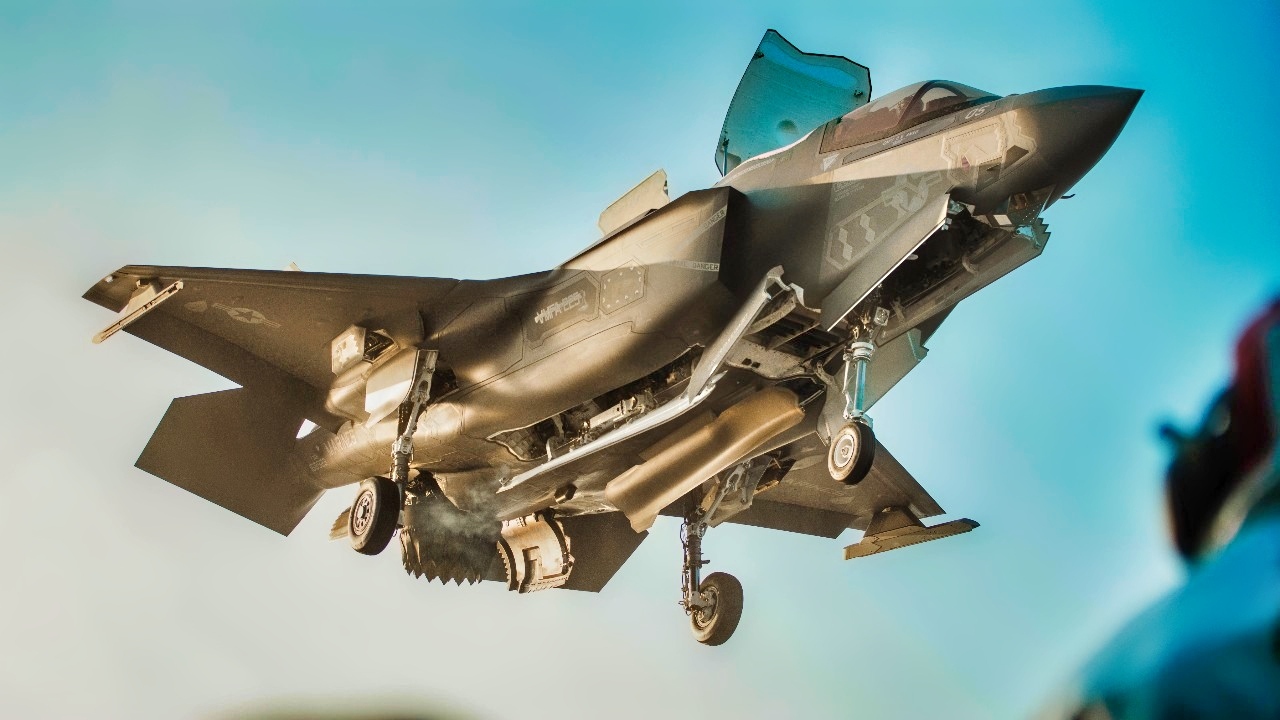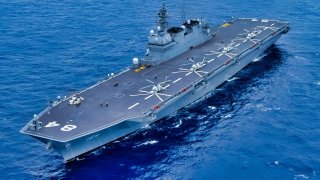A Royal Navy F-35 Just Landed on a Japanese 'Aircraft Carrier'
A Royal Air Force (RAF) F-35B has successfully landed on the Japanese flattop JS Kaga for the first time, marking another step in enhancing interoperability among allied forces in the Indo-Pacific. This follows similar trials with the U.S. Navy’s F-35B on the Izumo-class vessel.
What You Need to Know: A Royal Air Force (RAF) F-35B has successfully landed on the Japanese flattop JS Kaga for the first time, marking another step in enhancing interoperability among allied forces in the Indo-Pacific. This follows similar trials with the U.S. Navy’s F-35B on the Izumo-class vessel.

-The transformation of Japan’s JS Kaga and JS Izumo into F-35B-compatible carriers reflects Tokyo’s evolving defense capabilities amid regional tensions.
-While Japan avoids calling these ships “aircraft carriers” due to constitutional restrictions, their expanded air capabilities have drawn China’s attention, as the upgraded Izumo-class carriers could support air operations reaching targets within mainland China.
An RAF F-35 Just Landed on a Japanese Flattop
Just weeks after a United States Navy Lockheed Martin F-35B Lightning II conducted its first landing on the Japanese Maritime Self-Defense Force (JMSDF) flattop JS Kaga (DDH-184), a Royal Air Force F-35B also landed on the multi-functional destroyer for the first time.
"Landmark landing! A F-35 pilot has landed on a Japanese Maritime Self Defense Force platform for the first time. @RoyalNavy Lt Cmdr Baker - a test pilot on exchange with the Patuxent River Integrated Test Force - conducted the flight that aims to boost allies' integration," UK Defence Staff in US announced on X, the social media platform formerly known as Twitter.

The vertical landing on November 2 occurred while the JMDSF warship was operating in the Pacific Ocean, off the coast of San Diego.
"Pax ITF flight test members, U.S. Sailors and Marines, and the JS Kaga crew are executing developmental tests during these sea trials to gather the necessary compatibility data to certify F-35B Lightning II short takeoff and vertical landing aircraft operations," the F-35 Lightning II Pax River Integrated Test Force (PAX ITF) announced.
"Following analysis, the test team will make recommendations for future F-35B operational launch and recovery envelopes, further enhancing the Japanese navy's capabilities," PAX ITF added. "The results of the testing will contribute to improved interoperability between Japan and the United States, strengthening the deterrence and response capabilities of the Japan-U.S. alliance and strengthening the security environment in the Indo-Pacific region."
Japan An Aircraft Carrier Power?
JS Kaga is one of the JMSDF Izumo-class multi-functional destroyers being transformed to operate with the F-35B, the fifth-generation fighter's short takeoff and vertical landing (STOVL) variant. The ongoing tests follow similar ones carried out with JS Izumo in 2021, marking the first time a Japanese warship has operated with fixed-wing aircraft since the Second World War.

The JMSDF has operated the JS Izumo and JS Kaga since 2013 and 2015 respectively. Though the two warships may resemble modern aircraft carriers, were officially described by Tokyo as a "multi-purpose operation destroyer" due to their main purpose being to seek out and destroy enemy submarines in the self-defense of Japan with rotary aircraft.
In 2018, Tokyo approved a plan that would greatly enhance the capabilities of the warships – transforming them into de facto aircraft carriers. Each of the vessels has already begun a two-stage transformation that will allow them to operate fixed-wing aircraft – notably the F-35B Lightning II.
JS Izumo has undergone its initial modification stage, which included the application of heat-resistant paint to its flight deck, while JS Kaga has seen the aforementioned modification of its bow section – which has resulted in it earning comparisons to the U.S. Navy's Wasp-class and America-class amphibious assault ships.
China is Taking Notice
Despite the modifications to its helicopter destroyers, Tokyo remains cautious in its exact terminology, refraining from explicitly labeling the modified Izumo-class vessels as aircraft carriers. That decision aligns with the nation's long-standing defensive security policies under the pacifist constitution, which was adopted after the Second World War. It did require some "reinterpretation" of the constitution's Article 9 – allowing Japan to exercise the right of "collective self-defense," and to engage in military action if one of its allies were to be attacked.
However, each of the converted warships could greatly enhance the JMSDF's ability to carry out air operations in the contested East China Sea – a move that has earned condemnation from Beijing. China may also note that Japan could be among the largest operators of the F-35 in Asia, and is currently on track to purchase at least 42 of the fifth-generation stealth fighters.
The carrier-based aircraft could be employed to strike positions within mainland China. According to a report from Interesting Engineering, researchers at the National Defence University's College of Joint Operations, operated by China's People's Liberation Army (PLA) have conducted war game studies and warned that U.S.-made stealth aircraft – including the F-35 but also the F-22 Raptor – could hit already Shanghai with cruise missiles while operating from Japanese airspace.
Coupled with a carrier, the stealth F-35B could possibly strike targets even deeper within China. Whether that fact serves as a deterrent to Beijing, or only increases the saber-rattling has yet to be seen.
Author Experience and Expertise: Peter Suciu
Peter Suciu is a Michigan-based writer. He has contributed to more than four dozen magazines, newspapers, and websites with over 3,200 published pieces over a twenty-year career in journalism. He regularly writes about military hardware, firearms history, cybersecurity, politics, and international affairs. Peter is also a Contributing Writer for Forbes and Clearance Jobs. You can follow him on Twitter: @PeterSuciu. You can email the author: [email protected].
Image Credit: Creative Commons and/or Shutterstock.


